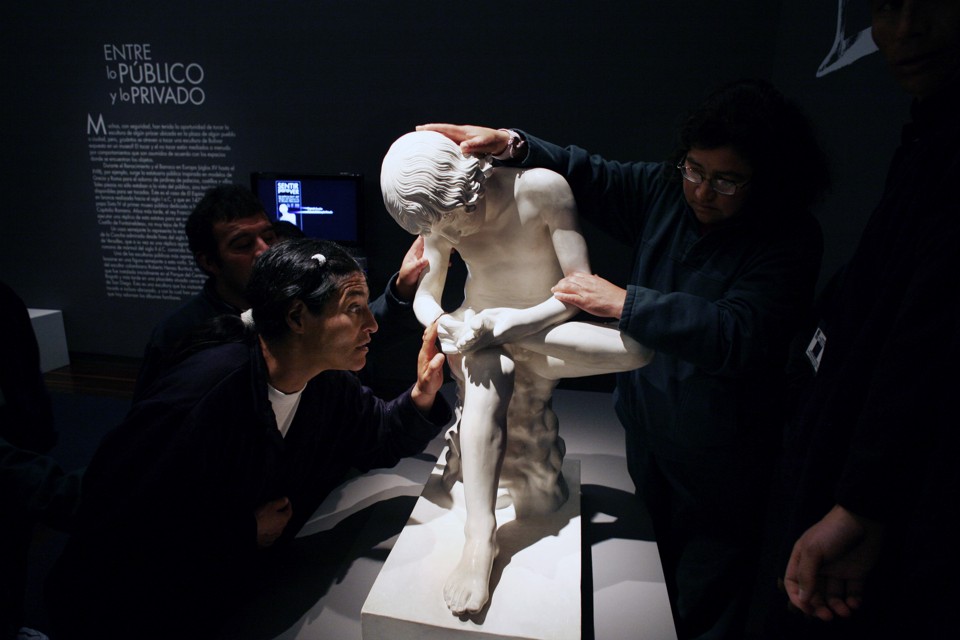In The Atlantic, Jacoba Urist reports on innovative programs at museums like the Met and the Guggenheim that attempt to help visually impaired patrons experience visual art. This usually takes the form of activating other senses such as touch and smell, as in the excerpt below. This suggests that what we call “visual art” may not be solely or even primarily visual after all.
Imagine having to interpret Jeff Koons’ Play-Doh, a 10-foot neon-colored mound of aluminum sculpted to resemble the putty-like toy many kids grew up squishing in their hands. Despite being painted metal, the artwork is deceptively tactile, with the crustiness and cracks of the real thing. “Whether you’ve lost your sight or are blind since birth, play dough is a kind of universal memory. We all remember how it feels and smells,” Krantz said.
On its own, however, a description of Play-Doh’s physical properties, or how it took Koons twenty-years to create, isn’t as likely to cause pangs of childhood nostalgia. So instead, “to make it present in the moment,” Krantz came up with a multi-step solution when Play-Doh was on display at the Whitney Museum’s 2014 retrospective. First, she handed out actual Play-Doh, and encouraged blind visitors to squeeze and inhale. Then, to show them the artwork’s dramatic “visual ruse,” she offered them a sample of the metal used, provided by Jeff Koons’s studio. Finally, to give a sense of scale, she walked her visitors around the large installation.
“Each work sets up different questions and options,” Krantz explains—and that’s true of every medium, from paint-on-canvas to elaborate three-dimensional work. In 2014, Multimedia designer Ezgi Ucar worked with the Metropolitan Museum of Art, in New York, to add sound and smell to small replicas of the Museum’s famous sculptures for the blind—or “tactiles,” as they’re called in the museum world. Her project, which she called “Multisensory Met,” was inspired by one of the Met’s pieces, Power Figure, a nearly four-foot spikey wood and metal sculpture from 19-century sub-Saharan Africa. And she envisioned “Multisensory Met” for sighted viewers like herself, too, who might emotionally or intellectually connect more to artwork if they weren’t only seeing it with their eyes. “When I saw [Power Figure], I really wanted to touch and smell it,” she explained. “All of these materials were added to the original figure during rituals like dirt from burial sites and white clay from riverbeds.”
So she put “a little bit of essential oil” atop her Power Figure model to simulate the object’s original scent—or at least, how it smelled to her. And to express the sculptor’s intent—the sculpture as spiritually intimidating—Ucar wired the inside of her tactile so it emits a buzzing sound when someone touches it.
Image: Blind visitors touch a sculpture of the Louvre’s Tactile Gallery collection at the National Museum in Bogota. Via The Atlantic.
